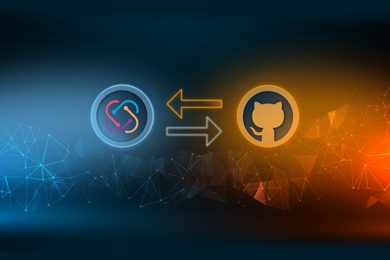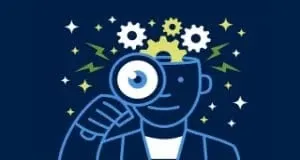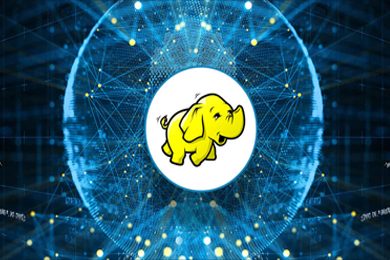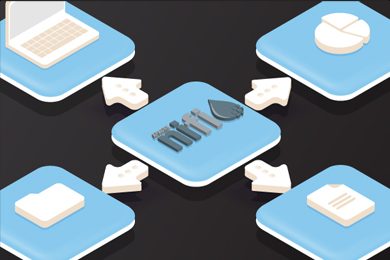This plan includes
- Limited free courses access
- Play & Pause Course Videos
- Video Recorded Lectures
- Learn on Mobile/PC/Tablet
- Quizzes and Real Projects
- Lifetime Course Certificate
- Email & Chat Support
What you'll learn?
- Become a professional Data Scientist, Data Engineer, Data Analyst or Consultant
- Learn data cleaning, processing, wrangling and manipulation
- How to create resume and land your first job as a Data Scientist
- How to use Python for Data Science
- How to write complex Python programs for practical industry scenarios
- Learn Plotting in Python (graphs, charts, plots, histograms etc)
- Learn to use NumPy for Numerical Data
- Machine Learning and it's various practical applications
- Supervised vs Unsupervised Machine Learning
- Learn Regression, Classification, Clustering and Sci-kit learn
- Machine Learning Concepts and Algorithms
- K-Means Clustering
- Use Python to clean, analyze, and visualize data
- Building Custom Data Solutions
- Statistics for Data Science
- Probability and Hypothesis Testing
Course Overview
Learn Python for Data Science & Machine Learning from A-Z
In this practical, hands-on course you’ll learn how to program using Python for Data Science and Machine Learning. This includes data analysis, visualization, and how to make use of that data in a practical manner.
Our main objective is to give you the education not just to understand the ins and outs of the Python programming language for Data Science and Machine Learning, but also to learn exactly how to become a professional Data Scientist with Python and land your first job.
We'll go over some of the best and most important Python libraries for data science such as NumPy, Pandas, and Matplotlib +
-
NumPy — A library that makes a variety of mathematical and statistical operations easier; it is also the basis for many features of the pandas library.
-
Pandas — A Python library created specifically to facilitate working with data, this is the bread and butter of a lot of Python data science work.
NumPy and Pandas are great for exploring and playing with data. Matplotlib is a data visualization library that makes graphs as you’d find in Excel or Google Sheets. Blending practical work with solid theoretical training, we take you from the basics of Python Programming for Data Science to mastery.
This Machine Learning with Python course dives into the basics of machine learning using Python. You'll learn about supervised vs. unsupervised learning, look into how statistical modeling relates to machine learning, and do a comparison of each.
We understand that theory is important to build a solid foundation, we understand that theory alone isn’t going to get the job done so that’s why this course is packed with practical hands-on examples that you can follow step by step. Even if you already have some coding experience, or want to learn about the advanced features of the Python programming language, this course is for you!
Python coding experience is either required or recommended in job postings for data scientists, machine learning engineers, big data engineers, IT specialists, database developers, and much more. Adding Python coding language skills to your resume will help you in any one of these data specializations requiring mastery of statistical techniques.
Together we’re going to give you the foundational education that you need to know not just on how to write code in Python, analyze and visualize data and utilize machine learning algorithms but also how to get paid for your newly developed programming skills.
The course covers 5 main areas:
1: PYTHON FOR DS+ML COURSE INTRO
This intro section gives you a full introduction to the Python for Data Science and Machine Learning course, data science industry, and marketplace, job opportunities and salaries, and the various data science job roles.
-
Intro to Data Science + Machine Learning with Python
-
Data Science Industry and Marketplace
-
Data Science Job Opportunities
-
How To Get a Data Science Job
-
Machine Learning Concepts & Algorithms
2: PYTHON DATA ANALYSIS/VISUALIZATION
This section gives you a full introduction to the Data Analysis and Data Visualization with Python with hands-on step by step training.
-
Python Crash Course
-
NumPy Data Analysis
-
Pandas Data Analysis
3: MATHEMATICS FOR DATA SCIENCE
This section gives you a full introduction to the mathematics for data science such as statistics and probability.
-
Descriptive Statistics
-
Measure of Variability
-
Inferential Statistics
-
Probability
-
Hypothesis Testing
4: MACHINE LEARNING
This section gives you a full introduction to Machine Learning including Supervised & Unsupervised ML with hands-on step-by-step training.
-
Intro to Machine Learning
-
Data Preprocessing
-
Linear Regression
-
Logistic Regression
-
K-Nearest Neighbors
-
Decision Trees
-
Ensemble Learning
-
Support Vector Machines
-
K-Means Clustering
-
PCA
5: STARTING A DATA SCIENCE CAREER
This section gives you a full introduction to starting a career as a Data Scientist with hands-on step by step training.
-
Creating a Resume
-
Creating a Cover Letter
-
Personal Branding
-
Freelancing + Freelance websites
-
Importance of Having a Website
-
Networking
By the end of the course you’ll be a professional Data Scientist with Python and confidently apply for jobs and feel good knowing that you have the skills and knowledge to back it up.
Pre-requisites
- Students should have basic computer skills
- Students would benefit from having prior Python Experience but not necessary
Target Audience
- Students who want to learn about Python for Data Science & Machine Learning
Curriculum 140 Lectures 14:21:02
Section 1 : Introduction
- Lecture 2 :
- Data Science and Machine Learning Marketplace
- Lecture 3 :
- Data Science Job Opportunities
- Lecture 4 :
- Data Science Job Roles
- Lecture 5 :
- What is a Data Scientist ?
- Lecture 6 :
- How To Get a Data Science Job
- Lecture 7 :
- Data Science Projects Overview
Section 2 : Data Science & Machine Learning Concepts
- Lecture 1 :
- Why use we python
- Lecture 2 :
- What is Data Science?
- Lecture 3 :
- What is Machine Learning?
- Lecture 4 :
- Machine Learning Concepts & Algorithms
- Lecture 5 :
- What is Deep Learning?
- Lecture 6 :
- Machine Learning vs Deep Learning
Section 3 : Python for Data Science
- Lecture 1 :
- What is Programming?
- Lecture 2 :
- Why Python for Data Science?
- Lecture 3 :
- What is Jupyter?
- Lecture 4 :
- What is Google Colab?
- Lecture 5 :
- Python Variables, Booleans and None
- Lecture 6 :
- Getting Started with Google Colab
- Lecture 7 :
- Python Operators
- Lecture 8 :
- Python Numbers & Booleans
- Lecture 9 :
- Python Strings
- Lecture 10 :
- Python Conditional Statements
- Lecture 11 :
- Python For Loops and While Loops
- Lecture 12 :
- Python Lists
- Lecture 13 :
- More about Lists
- Lecture 14 :
- Python Tuples
- Lecture 15 :
- Python Dictionaries
- Lecture 16 :
- Python Sets
- Lecture 17 :
- Compound Data Types & When to use each one?
- Lecture 18 :
- Python Functions
- Lecture 19 :
- Object Oriented Programming in Python
Section 4 : Statistics for Data Science
- Lecture 1 :
- Intro To Statistics
- Lecture 2 :
- Descriptive Statistics
- Lecture 3 :
- Measure of Variability
- Lecture 4 :
- Measure of Variability Continued
- Lecture 5 :
- Measures of Variable Relationship
- Lecture 6 :
- Inferential Statistics
- Lecture 7 :
- Measure of Asymmetry
- Lecture 8 :
- Sampling Distribution
Section 5 : Probability and Hypothesis Testing
- Lecture 1 :
- What Exactly is Probability?
- Lecture 2 :
- Expected Values
- Lecture 3 :
- Relative Frequency
- Lecture 4 :
- Hypothesis Testing Overview
Section 6 : NumPy Data Analysis
- Lecture 1 :
- Intro NumPy Array Data Types
- Lecture 2 :
- NumPy Arrays
- Lecture 3 :
- NumPy Arrays Basics
- Lecture 4 :
- NumPy Array Indexing
- Lecture 5 :
- NumPy Array Computations
- Lecture 6 :
- Broadcasting
Section 7 : Pandas Data Analysis
- Lecture 1 :
- Introduction to Pandas
- Lecture 2 :
- Introduction to Pandas Continued
Section 8 : Python Data Visualization
- Lecture 1 :
- Data Visualization Overview
- Lecture 2 :
- Different Data Visualization Libraries in Python
- Lecture 3 :
- Python Data Visualization Implementation
Section 9 : Machine Learning
- Lecture 1 :
- Introduction To Machine Learning
Section 10 : Data Loading and Exploration
- Lecture 1 :
- Exploratory Data Analysis
Section 11 : Data Cleaning
- Lecture 1 :
- Feature Scaling
- Lecture 2 :
- Data Cleaning
Section 12 : Feature Selecting and Engineering
- Lecture 1 :
- Feature Engineering
Section 13 : Linear and Logistic Regression
- Lecture 1 :
- Linear Regression Intro
- Lecture 2 :
- Gradient Descent
- Lecture 3 :
- Linear Regression + Correlation Methods
- Lecture 4 :
- Linear Regression Implementation
- Lecture 5 :
- Logistic Regression
Section 14 : K Nearest Neighbors
- Lecture 1 :
- KNN Overview
- Lecture 2 :
- parametric vs non-parametric models
- Lecture 3 :
- EDA on Iris Dataset
- Lecture 4 :
- The KNN Intuition
- Lecture 5 :
- Implement the KNN algorithm from scratch
- Lecture 6 :
- Compare the result with the sklearn library
- Lecture 7 :
- Hyperparameter tuning using the cross-validation
- Lecture 8 :
- The decision boundary visualization
- Lecture 9 :
- Manhattan vs Euclidean Distance
- Lecture 10 :
- Feature scaling in KNN
- Lecture 11 :
- Curse of dimensionality
- Lecture 12 :
- KNN use cases
- Lecture 13 :
- KNN pros and cons
Section 15 : Decision Trees
- Lecture 1 :
- Decision Trees Section Overview
- Lecture 2 :
- EDA on Adult Dataset
- Lecture 3 :
- What is Entropy and Information Gain?
- Lecture 4 :
- The Decision Tree ID3 algorithm from scratch Part 1
- Lecture 5 :
- The Decision Tree ID3 algorithm from scratch Part 2
- Lecture 6 :
- The Decision Tree ID3 algorithm from scratch Part 3
- Lecture 7 :
- ID3 - Putting Everything Together
- Lecture 8 :
- Evaluating our ID3 implementation
- Lecture 9 :
- Compare with Sklearn implementation
- Lecture 10 :
- Visualizing the tree
- Lecture 11 :
- Plot the features importance
- Lecture 12 :
- Decision Trees Hyper-parameters
- Lecture 13 :
- Pruning
- Lecture 14 :
- [Optional] Gain Ration
- Lecture 15 :
- Decision Trees Pros and Cons
- Lecture 16 :
- [Project] Predict whether income exceeds $50K/yr - Overview
Section 16 : Ensemble Learning and Random Forests
- Lecture 1 :
- Ensemble Learning Section Overview
- Lecture 2 :
- What is Ensemble Learning?
- Lecture 3 :
- What is Bootstrap Sampling?
- Lecture 4 :
- What is Bagging?
- Lecture 5 :
- Out-of-Bag Error (OOB Error)
- Lecture 6 :
- Implementing Random Forests from scratch Part 1
- Lecture 7 :
- Implementing Random Forests from scratch Part 2
- Lecture 8 :
- Compare with sklearn implementation
- Lecture 9 :
- Random Forests Hyper-Parameters
- Lecture 10 :
- Random Forests Pros and Cons
- Lecture 11 :
- What is Boosting?
- Lecture 12 :
- AdaBoost Part 1
- Lecture 13 :
- AdaBoost Part 2
Section 17 : Support Vector Machines
- Lecture 1 :
- SVM Outline
- Lecture 2 :
- SVM intuition
- Lecture 3 :
- Hard vs Soft Margins
- Lecture 4 :
- C hyper-parameter
- Lecture 5 :
- Kernel Trick
- Lecture 6 :
- SVM - Kernel Types
- Lecture 7 :
- SVM with Linear Dataset (Iris)
- Lecture 8 :
- SVM with Non-linear Dataset
- Lecture 9 :
- SVM with Regression
- Lecture 10 :
- [Project] Voice Gender Recognition using SVM
Section 18 : K- Means
- Lecture 1 :
- Unsupervised Machine Learning Intro
- Lecture 2 :
- Unsupervised Machine Learning Continued
- Lecture 3 :
- Data Standardization
Section 19 : PCA
- Lecture 1 :
- PCA Section Overview
- Lecture 2 :
- What is PCA?
- Lecture 3 :
- PCA Drawbacks
- Lecture 4 :
- PCA Algorithm Steps (Mathematics)
- Lecture 5 :
- Covariance Matrix vs SVD
- Lecture 6 :
- PCA - Main Applications
- Lecture 7 :
- PCA - Image Compression
- Lecture 8 :
- PCA Data Preprocessing
- Lecture 9 :
- PCA - Biplot and the Screen Plot
- Lecture 10 :
- PCA - Feature Scaling and Screen Plot
- Lecture 11 :
- PCA - Supervised vs Unsupervised
- Lecture 12 :
- PCA - Visualization
Section 20 : Data Science Career
- Lecture 1 :
- Creating A Data Science Resume
- Lecture 2 :
- Data Science Cover Letter
- Lecture 3 :
- How to Contact Recruiters
- Lecture 4 :
- Getting Started with Freelancing
- Lecture 5 :
- Top Freelance Websites
- Lecture 6 :
- Personal Branding
- Lecture 7 :
- Networking Do's and Don'ts
- Lecture 8 :
- Importance of a Website
Our learners work at
Frequently Asked Questions
How do i access the course after purchase?
It's simple. When you sign up, you'll immediately have unlimited viewing of thousands of expert courses, paths to guide your learning, tools to measure your skills and hands-on resources like exercise files. There’s no limit on what you can learn and you can cancel at any time.Are these video based online self-learning courses?
Yes. All of the courses comes with online video based lectures created by certified instructors. Instructors have crafted these courses with a blend of high quality interactive videos, lectures, quizzes & real world projects to give you an indepth knowledge about the topic.Can i play & pause the course as per my convenience?
Yes absolutely & thats one of the advantage of self-paced courses. You can anytime pause or resume the course & come back & forth from one lecture to another lecture, play the videos mulitple times & so on.How do i contact the instructor for any doubts or questions?
Most of these courses have general questions & answers already covered within the course lectures. However, if you need any further help from the instructor, you can use the inbuilt Chat with Instructor option to send a message to an instructor & they will reply you within 24 hours. You can ask as many questions as you want.Do i need a pc to access the course or can i do it on mobile & tablet as well?
Brilliant question? Isn't it? You can access the courses on any device like PC, Mobile, Tablet & even on a smart tv. For mobile & a tablet you can download the Learnfly android or an iOS app. If mobile app is not available in your country, you can access the course directly by visting our website, its fully mobile friendly.Do i get any certificate for the courses?
Yes. Once you complete any course on our platform along with provided assessments by the instructor, you will be eligble to get certificate of course completion.
For how long can i access my course on the platform?
You require an active subscription to access courses on our platform. If your subscription is active, you can access any course on our platform with no restrictions.Is there any free trial?
Currently, we do not offer any free trial.Can i cancel anytime?
Yes, you can cancel your subscription at any time. Your subscription will auto-renew until you cancel, but why would you want to?
Instructor

692314 Course Views
16 Courses



 Tech & IT
Tech & IT
 Business
Business
 Coding & Developer
Coding & Developer
 Finance & Accounting
Finance & Accounting
 Academics
Academics
 Office Applications
Office Applications
 Art & Design
Art & Design
 Marketing
Marketing
 Health & Wellness
Health & Wellness
 Sounds & Music
Sounds & Music
 Lifestyle
Lifestyle
 Photography
Photography


























